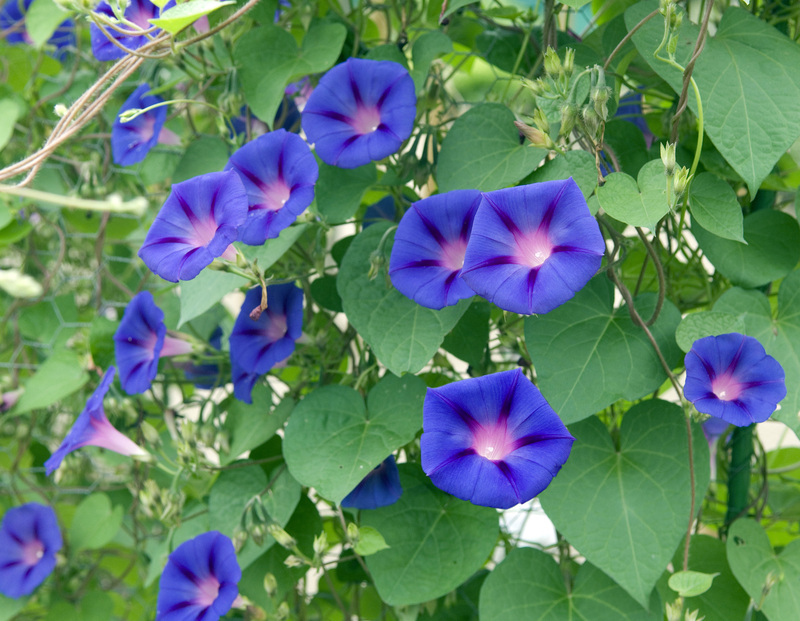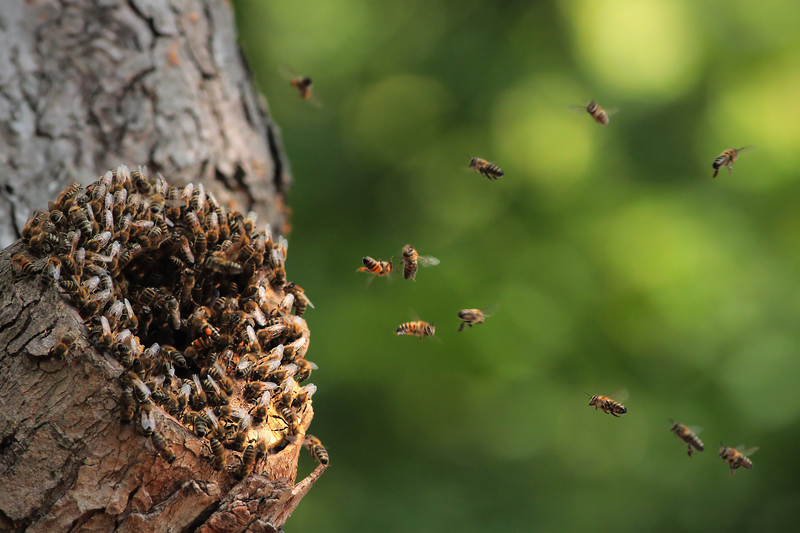Nature Meets Design: Vibrant Hedge Trimming Shapes and Techniques
Posted on 01/06/2025
Nature Meets Design: Vibrant Hedge Trimming Shapes and Techniques
Hedge trimming isn't just about keeping your garden neat--it's an art form. As nature and design seamlessly converge, creative gardeners and landscape designers are exploring vibrant hedge shapes and innovative hedge trimming techniques to add personality, character, and order to outdoor spaces.
Exploring the Art of Shaped Hedges
Nature meets design most beautifully when organic forms receive guidance from a creative vision. Hedge trimming shapes allow you to sculpt living greenery into geometric, whimsical, or even thematic forms. This creative pursuit not only enhances curb appeal but also allows property owners to express their individuality through landscaping.
Benefits of Artistic Hedge Design
- Visual Interest: Artistic shapes transform a dull hedge into a focal point.
- Property Value: Well-maintained hedges increase curb appeal and value.
- Biodiversity: Structured but lush hedging supports wildlife while contributing to design.
- Personal Expression: Unique shapes reflect the gardener's personality and creativity.

Popular Hedge Trimming Shapes
The world of hedge design offers almost limitless possibilities, from minimalist lines to flamboyant topiary. Below are the most beloved and vibrant hedge shapes for gardens of all sizes.
1. Geometric Forms
- Squares and Rectangles: Perfect for modern landscapes, these shapes provide order and symmetry.
- Balls and Spheres: Round hedges soften edges and punctuate flowerbeds effortlessly.
- Pyramids and Cones: These dramatic shapes lend grandeur to entryways and paths.
2. Curves and Waves
A flowing wave or gentle curve can evoke a sense of movement and harmony with the surrounding landscape. Trimming hedges into undulating shapes can help link various elements of a garden, providing a natural yet stylized look.
3. Animal and Figurative Topiary
Topiary is the ultimate fusion of nature and design. From classic peacocks and rabbits to abstract sculptures, topiary hedges command attention and spark imagination. This technique requires patience but pays off with truly vibrant results.
4. Themed Borders
- Maze Gardens: Interconnected hedges create enchanting, interactive landscapes.
- Seasonal Cut-Outs: Holiday shapes or initials for special occasions bring festive cheer.
- Lettering: Personalize your space by trimming hedges into words or names.
5. Abstract and Freeform
Sometimes, breaking the rules leads to the most stunning results. Allowing natural shapes to dictate the trim--perhaps with playful undulations or unexpected peaks--today's landscaping trends embrace more organic designs that blur the line between nature and modern art.
Techniques for Vibrant Hedge Trimming
Creating lush, vibrant hedge shapes isn't simply a matter of snipping away. Achieving bold, distinctive forms requires the right tools, timing, and mastery of contemporary hedge trimming techniques.
Essential Tools for Precision Trimming
- Hand Shears: For detailed work and fine finishes.
- Electric Hedge Trimmers: Efficiently shape larger hedges with uniformity.
- String Lines and Frames: Guide straight lines and curves for geometric accuracy.
- Topiary Frames: Mold younger plants into complex animal or figurative shapes.
Step-by-Step: Achieving Perfect Hedge Shapes
-
Plan Your Shape:
- Visualize the end result or sketch it out on paper.
- Consider the plant species--dense, small-leaved evergreens like boxwood are best for elaborate designs.
-
Mark Your Guidelines:
- Use stakes and string for straight edges or custom guides for curves and circles.
-
Start Broad Trimming:
- Remove excess growth in stages rather than at once, stepping back to review progress regularly.
-
Refine Details:
- Switch to hand shears for refined edges and fine-tuning curves or features.
-
Encourage Healthy Growth:
- Regular light trimming encourages denser foliage and optimum health.
Advanced Techniques for Artistic Hedges
- Cloud Pruning: Inspired by Japanese niwaki, this artful style creates cloud-like domes for tranquil settings.
- Espalier: Training plants to grow flat along trellises, fences, or walls.
- Layering: Combining different hedge heights and shapes for multi-dimensional designs.
- Color Contrasts: Mixing variegated species or flowering shrubs to add pops of color to the design.
Best Practices for Healthy Hedge Trimming
A vibrant, sculpted hedge not only looks stunning but should also remain healthy. Follow these top tips to maintain both design and plant vitality:
- Trim at the right time: Most hedges prefer pruning in late winter or early spring, before new growth starts.
- Sharpen blades regularly: Clean, sharp tools make for healthier cuts and tidier lines.
- Avoid heavy trims during heatwaves: Excess trimming can stress plants during hot, dry periods.
- Feed and water adequately: Well-nourished hedges bounce back from trimming faster and display richer colors.
- Protect wildlife: Always check for nesting birds or beneficial insects before trimming.
Common Hedge Trimming Mistakes to Avoid
- Cutting too deeply into old wood, which may not regrow.
- Using blunt tools that tear rather than cut.
- Ignoring shape guidelines, leading to uneven designs.
- Trimming at the wrong time of year, which can jeopardize flowering or frost resistance.
Top Hedge Species for Creative Trimming
Not all hedges are created equal for artistic pruning. The following species excel for both simple shapes and advanced topiary designs:
- Boxwood (Buxus): The classic choice for tight, formal shapes.
- Yew (Taxus): Dense, slow-growing, and ideal for grand sculptures.
- Privet (Ligustrum): Rapid growth makes it forgiving of mistakes and suitable for creative endeavors.
- Holly (Ilex): Hardy with sharp outlines, works well for less intricate shapes.
- Hornbeam (Carpinus betulus): Deciduous but maintains shape well throughout the seasons.
- Laurel (Prunus laurocerasus): Big, glossy leaves for bold, broad shapes.
Innovative Trends in Hedge Trimming
The art of hedge trimming is evolving with new trends enhancing traditional techniques:
- Eco-friendly maintenance: Battery-powered tools and organic practices reduce the environmental impact.
- Wildlife-friendly hedges: Integrating native species and leaving sections untrimmed to support pollinators and birds.
- Mixed-media boundaries: Combining living hedges with stone, metal, or wood for a contemporary twist.
- Edible hedges: Trimming fruiting shrubs like currants, gooseberries, and rosemary into attractive shapes that also feed the family.
The Rise of Living Sculptures
Contemporary landscape designers routinely create living sculptures using advanced pruning, wire supports, and strategic species selection--a sure way to make nature truly meet artistic design. From whimsical topiary zoos to memorial labyrinths, hedges are no longer just boundaries--they have become expressions of living artistry.

Conclusion: Express Yourself Through Hedge Design
The intersection of nature and design offers endless opportunities for creativity and beauty in the garden. By embracing vibrant hedge shapes and mastering innovative hedge trimming techniques, anyone can turn their landscape into a living masterpiece. Whether your preference is for clean geometric forms, flowing natural waves, or elaborate topiary, these techniques breathe life and artistry into any outdoor space.
Remember: Great hedge design takes time, patience, and a willingness to experiment. Start with simple shapes, master basic pruning, then let your imagination take flight. With each careful trim, your garden evolves into a testament to where nature truly meets design.
Frequently Asked Questions
-
What time of year is best for hedge trimming?
For most species, late winter or early spring is ideal. Avoid heavy trimming in summer or before frost. -
How often should I trim my hedges?
Formal shapes may need a trim 2-3 times a year; informal or wildlife-friendly hedges less frequently. -
Can I create artistic shapes from older, established hedges?
Yes, but it's best to proceed gradually over several seasons to avoid shocking the plant. -
Which species are best for topiary?
Boxwood, yew, and privet are favorites for intricate designs, while holly and laurel yield bold, robust forms.
Add a sense of wonder, order, and beauty to your garden by letting vibrant hedge trimming shape the way nature meets your sense of design.
```
